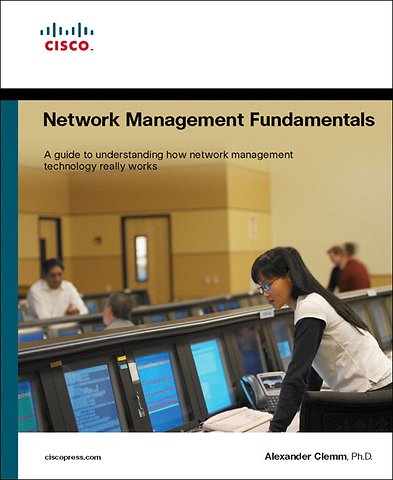Network Management Fundamentals
Paperback Engels 2006 9781587201370Samenvatting
Network Management Fundamentals
A guide to understanding how network management technology really works
Alexander Clemm, Ph.D.
Network management is an essential factor in successfully operating a network. As a company becomes increasingly dependent on networking services, keeping those services running is synonymous with keeping the business running. Network Management Fundamentals provides you with an accessible overview of network management covering management not just of networks themselves but also of services running over those networks.
Network Management Fundamentals explains the different technologies that are used in network management and how they relate to each other. The book focuses on fundamental concepts and principles. It provides a solid technical foundation for the practitioner to successfully navigate network management topics and apply those concepts to particular situations.
The book is divided into four parts: Part I provides an overview of what network management is about and why it is relevant. It also conveys an informal understanding of the functions, tools, and activities that are associated with it. Part II examines network management from several different angles, culminating in a discussion of how these aspects are combined into management reference models. Part III provides more detail into different building blocks of network management introduced in Part II, such as management protocols, management organization, and management communication patterns. Part IV rounds out the book with a number of management topics of general interest, including management integration and service-level management.
Dr. Alexander Clemm is a senior architect with Cisco®. He has been involved with integrated management of networked systems and services since 1990. He has provided technical leadership for many leading-edge network management development, architecture, and engineering efforts from original conception to delivery to the customer, and he has also served as technical program co-chair of the 2005 IFIP/IEEE International Symposium on Integrated Network Management.
Grasp the business implications of network management Examine different management reference models, such as Fault, Configuration, Accounting, Performance, and Security (FCAPS) Understand the building blocks of network management and their purposes Assess the implications and impact of management technologies and put them in perspective Prepare for decisions about network management that require an understanding of the “big picture”
This book is part of the Cisco Press® Fundamentals Series. Books in this series introduce networking professionals to new networking technologies, covering network topologies, example deployment concepts, protocols, and management techniques.
Category: Networking
Covers: Network Management
$55.00 USA / $69.00 CAN
Specificaties
Lezersrecensies
Inhoudsopgave
Rubrieken
- advisering
- algemeen management
- coaching en trainen
- communicatie en media
- economie
- financieel management
- inkoop en logistiek
- internet en social media
- it-management / ict
- juridisch
- leiderschap
- marketing
- mens en maatschappij
- non-profit
- ondernemen
- organisatiekunde
- personal finance
- personeelsmanagement
- persoonlijke effectiviteit
- projectmanagement
- psychologie
- reclame en verkoop
- strategisch management
- verandermanagement
- werk en loopbaan
